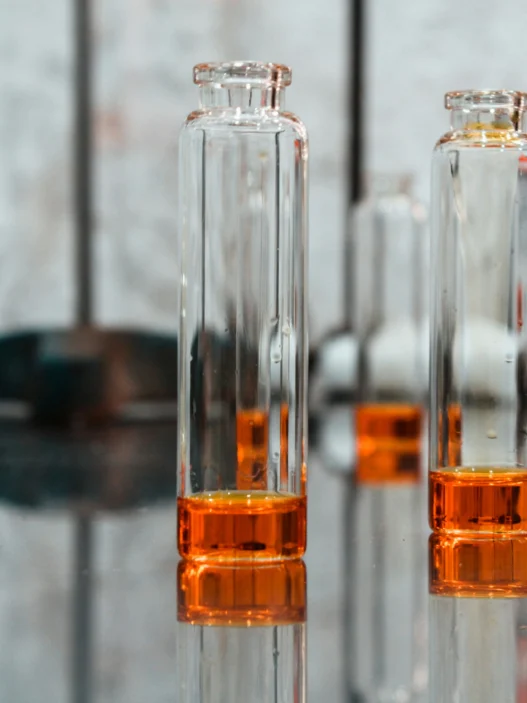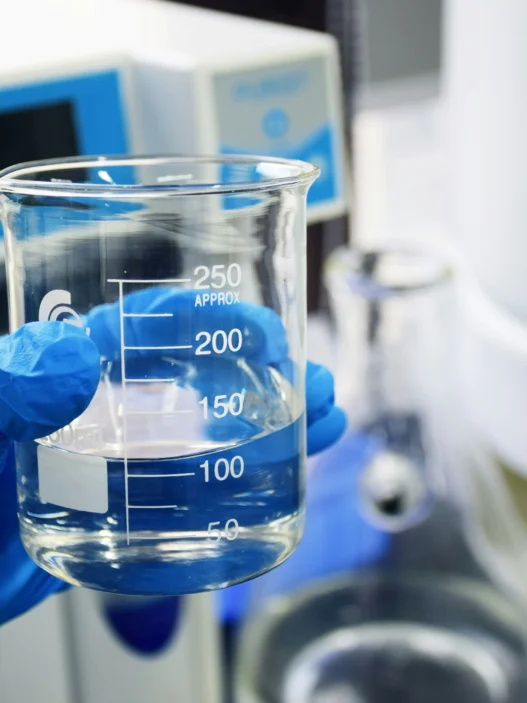3-(Diethylamino)phenol, also known as DEAP, is a compound commonly used in the production of hair dyes and colorants. Its relevance to everyday life lies in its role as a key ingredient in hair coloring products, which are widely used by individuals seeking to change or enhance their hair color. As such, DEAP plays a significant role in the beauty and personal care industry, impacting the choices and appearance of many consumers on a daily basis.
Table of Contents:
- 💡 Commercial Applications
- ⚗️ Chemical & Physical Properties
- 🏭 Production & Procurement
- ⚠️ Safety Considerations
- 🔬 Potential Research Directions
- 🧪 Related Compounds
💡 Commercial Applications
3-(Diethylamino)phenol, also known as DEAP, is commonly used in the commercial and industrial sectors. One primary application is as a stabilizer in the production of photographic emulsions, where it helps preserve image quality and prevent color fading. Additionally, DEAP is utilized in the manufacturing of dyes and pigments due to its ability to enhance color intensity and stability.
In the pharmaceutical industry, DEAP finds significance in the development of drugs and medications. Its use as an intermediate in the synthesis of various pharmaceutical compounds makes it a valuable component in drug manufacturing processes. DEAP’s chemical properties also contribute to its role as an active ingredient in certain medications, particularly those used for pain relief and anti-inflammatory purposes.
Overall, the diverse applications of 3-(Diethylamino)phenol highlight its versatility and importance in both commercial and industrial settings. Its unique properties make it a valuable component in various industries, ranging from photography and textiles to pharmaceuticals and healthcare. As ongoing research continues to explore its potential uses, DEAP remains a versatile compound with promising applications in multiple fields.
⚗️ Chemical & Physical Properties
3-(Diethylamino)phenol is a white to off-white crystalline solid with a faint amine-like odor. It is also known as DEAP and is commonly used in the synthesis of organic compounds due to its chemical properties.
The molar mass of 3-(Diethylamino)phenol is approximately 179.25 g/mol, with a density of around 1.05 g/cm³. Compared to common food items such as sugar (molar mass 342.30 g/mol, density 1.59 g/cm³) and salt (molar mass 58.44 g/mol, density 2.16 g/cm³), DEAP has a lower molar mass and density.
3-(Diethylamino)phenol has a melting point of around 62-64°C and a boiling point of approximately 270-273°C. In comparison, common food items like butter (melting point 32-35°C, boiling point 177-204°C) and olive oil (melting point -6-2°C, boiling point 207-243°C) have lower melting and boiling points.
3-(Diethylamino)phenol is sparingly soluble in water and has a low viscosity. In contrast, common food items like sugar and salt are highly soluble in water, while oils like olive oil have higher viscosities. DEAP’s solubility and viscosity fall in between these common food items.
🏭 Production & Procurement
3-(Diethylamino)phenol, a chemical compound commonly used in the production of pharmaceuticals and pesticides, is typically produced through a multi-step synthesis process. The starting materials for this synthesis typically include phenol and diethylamine, which are reacted under controlled conditions to yield the desired product. This reaction is often carried out in the presence of a catalyst to facilitate the formation of the desired product and improve reaction efficiency.
Once 3-(Diethylamino)phenol has been produced, it can be procured through various chemical suppliers and manufacturers. The compound is typically available in both liquid and solid form, depending on the intended application. It can be purchased in bulk quantities for industrial use or in smaller quantities for research purposes. In terms of transportation, 3-(Diethylamino)phenol is typically shipped in sealed containers to prevent contamination or degradation during transit.
In the realm of industrial applications, 3-(Diethylamino)phenol is often used as a precursor in the production of various pharmaceuticals, dyes, and pesticides. It is known for its ability to act as a catalyst in certain chemical reactions, making it a valuable component in various manufacturing processes. The compound is considered to be stable under normal storage conditions, but precautions should be taken to prevent exposure to moisture or extreme temperatures that could compromise its integrity.
⚠️ Safety Considerations
Safety considerations for 3-(Diethylamino)phenol include its potential to cause skin irritation, eye irritation, and respiratory irritation. It is important to handle this chemical with care, wearing appropriate personal protective equipment such as gloves, goggles, and a lab coat. Proper ventilation should be in place when working with this compound to prevent inhalation of vapors.
In terms of hazard statements, 3-(Diethylamino)phenol is classified as harmful if swallowed, causes skin irritation, causes serious eye irritation, and may cause respiratory irritation. It is important to be aware of these potential hazards when working with this chemical and to take appropriate safety precautions to prevent exposure.
Precautionary statements for 3-(Diethylamino)phenol include avoiding breathing in dust, fumes, gas, mist, vapors, and spray. In case of skin contact, it is important to wash with plenty of soap and water and seek medical advice if irritation persists. If eye contact occurs, it is recommended to rinse cautiously with water for several minutes and remove contact lenses if present. It is important to continue to rinse thoroughly and seek medical attention if irritation persists. Proper storage of this chemical is also crucial to prevent accidental exposure or spills.
🔬 Potential Research Directions
One potential research direction for 3-(Diethylamino)phenol is its pharmacological properties, including its potential as a pharmaceutical agent for various medical conditions. Studies could focus on its mechanisms of action, efficacy, and potential side effects in different biological systems.
Another area of research could involve investigating the environmental fate and toxicity of 3-(Diethylamino)phenol. This could include studies on its degradation pathways, bioaccumulation potential, and impact on aquatic ecosystems. Understanding these aspects can aid in the development of regulations and mitigation strategies for its environmental presence.
Furthermore, research could explore the synthesis and modification of 3-(Diethylamino)phenol derivatives for various applications, such as in the development of new materials or chemical compounds. This could involve structure-activity relationship studies, optimization of synthetic routes, and evaluation of potential uses in industry or academia.
🧪 Related Compounds
An analog of 3-(Diethylamino)phenol with a similar molecular structure is 3-(Dipropylamino)phenol. In this compound, the diethylamine group is replaced with a dipropylamine group, resulting in a molecule with a longer alkyl chain. This change in substituent can affect the compound’s solubility, reactivity, and overall chemical properties.
Another related compound is 3-(Dimethylamino)phenol, where the diethylamine group is replaced with a dimethylamine group. This modification alters the electronic and steric properties of the compound, leading to potential differences in its biological activity or chemical reactivity. Understanding the structure-activity relationships of such analogs can provide insights into the importance of specific functional groups in determining a compound’s properties.





